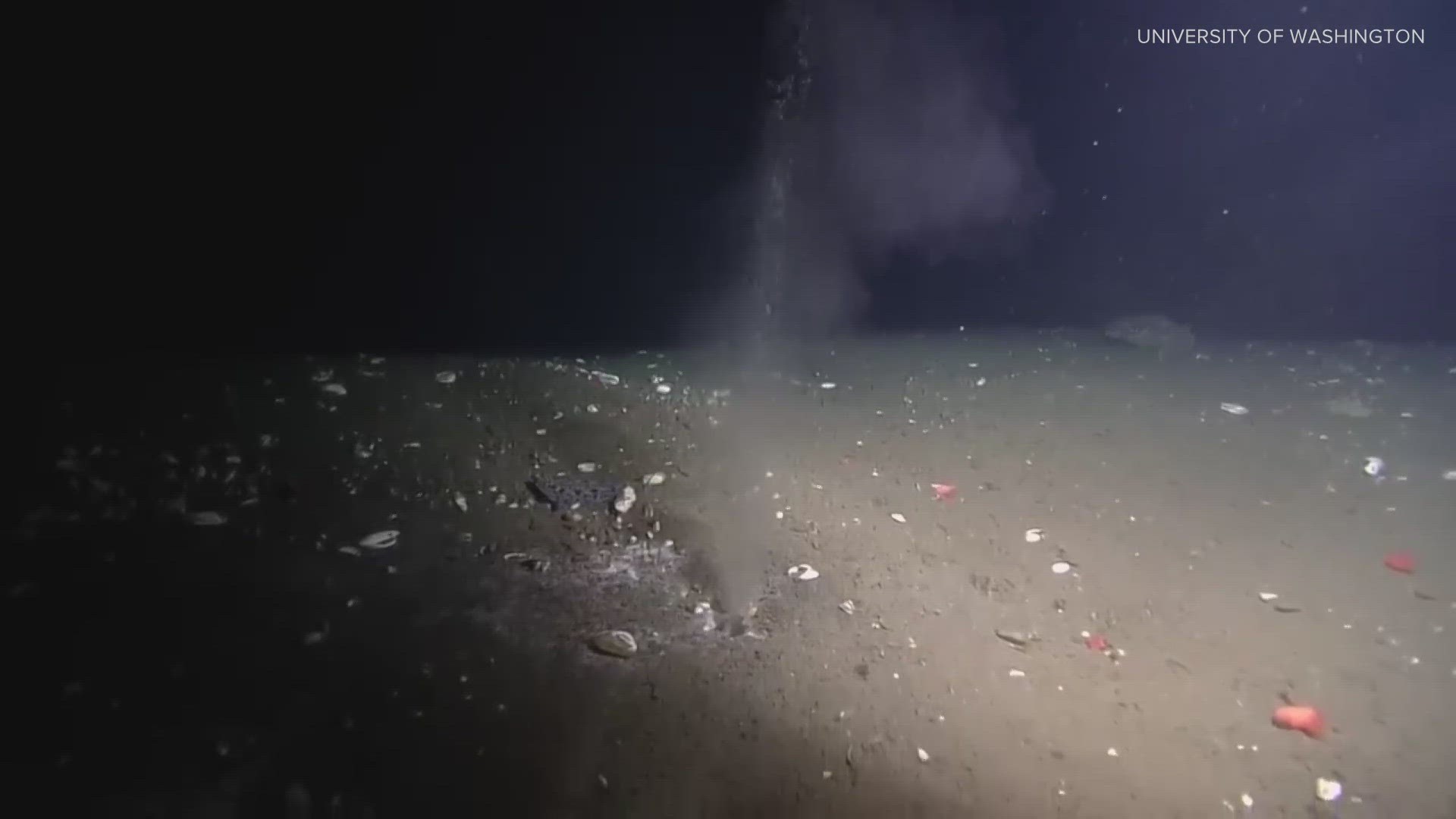SEATTLE — Researchers say a recently released study about the discovery of warm liquid spewing from the seafloor off the coast of Oregon could reveal new information about the relationships between oceanic activity and faults like the Cascadia Subduction Zone.
"[It has implications] for studying earthquake activity along our coast in new ways," UW Professor of Oceanography Deborah Kelley said. "The whole Pacific Rim, there's subduction zones all over the place. It does have implications, not only for our own environment but throughout the world's oceans in terms of subduction zone behavior, where there are these perpendicular faults."
The study, led by the University of Washington, found warm liquid seeping from the seafloor near Newport, Oregon. Researchers named the unique underwater spring "Pythias Oasis." According to researchers, it appears the spring comes from water 2.5 miles under the seafloor at a plate boundary for the Cascadia fault.
The initial discovery was made during a weather-related delay on a trip aboard the RV Thomas G. Thompson. In later trips, researchers observed that the fluid leaving the seafloor was 9 degrees Celsius warmer than the surrounding seawater. According to a news release, "calculations suggest the fluid is coming straight from the Cascadia megathrust."
Researchers say the seeps are happening near faults where sections of ocean crust and sediment slide past each other. In a sense, they say, fluid released from the fault zone is like leaking lubricant. According to UW, less lubricant means stress can build more.
But researchers note that they are not alarmed by this finding; they say the feature itself doesn't "trigger" earthquakes, and that their discovery does not change the current risk of a large earthquake on the Cascadia Subduction Zone. Washington state emergency managers have said there is a 15-25% chance of an earthquake along the CSZ in the next fifty years.
Professor Kelley says researchers are also interested in the increase in sea life located near the site over the years -- and what else they could learn from the seep.
"As we start thinking of climate change, we don't have good measurements of how much methane is coming out of here and how much reaches the surface, it's a greenhouse gas, so, there's many many reasons to study these systems," Kelley said.

